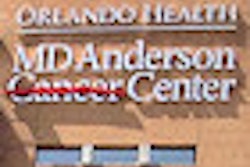A new analysis of data from the landmark 2011 National Lung Screening Trial (NLST) found that low-dose CT detected twice as many early-stage lung cancers as x-ray on initial screening, cementing CT's promise as a tool that can reduce lung cancer mortality by 20% or more, according to results published in the New England Journal of Medicine.
The new analysis shows exactly how many patients were positive and/or went on to further tests, and it offers a way to show patients what they can expect in a CT lung cancer screening program, the study team wrote (NEJM, May 23, 2013, Vol. 368:21, pp. 1980-1991).
It also drives a stake in the heart of x-ray-based lung screening.
"We know now that low-dose CT works at identifying lung cancers in the earlier stages -- chest x-ray does not work," said Dr. Caroline Chiles, professor of radiology at Wake Forest University and co-investigator in the original trial.
A deeper dive
NLST is a longitudinal clinical trial that randomized more than 53,000 participants equally to receive screening with either low-dose CT or standard chest x-ray in an effort to evaluate whether lung cancer screening saves lives in a high-risk population. Results published in 2011 demonstrated a 20% reduction in lung cancer deaths among study participants screened with CT.
The new paper provides a deeper dive into the data generated by the study. Similar to other large lung cancer screening trials that compared low-dose CT with x-ray, CT in NLST had more than four times the number of positive screening exams and caused more than three times as many diagnostic procedures, according to the analysis. CT also led to more biopsies and invasive procedures, and the modality found 100 more lung cancers during the first screening round.
For example, if 100 people are screened, 27 might get a letter saying they had a positive exam. But the vast majority of the follow-up procedures caused by CT lung screening are noninvasive, and most biopsies are performed on patients who later turn out to have cancer.
"Even if you get a letter saying we had a positive finding, most of the time we are able to [follow up] with repeat CT," Chiles said.
Study objectivity was a priority in NLST, and for that reason, researchers had no access to the data until the results showed that a mortality reduction existed, explained Chiles.
So while the results of this analysis were generally anticipated, a key reason to publish the data was to document the exact differences between the CT and x-ray arms of the study, the authors noted in a statement accompanying the release of the study.
| New analysis of NLST cancer detection and follow-up procedures | ||
| No. of CT patients | No. of x-ray patients | |
| Positive screen results | 7,191 | 2,387 |
| Diagnostic procedures postscreening | 6,369 | 2,176 |
| Biopsies and invasive procedures postscreening | 297 | 121 |
| Lung cancers detected | 292 | 190 |
By following the screening protocol, the number of invasive procedures can be reduced so patients aren't inconvenienced, and screening costs are kept as low as possible, Chiles said. For example, of the 297 biopsies and invasive procedures postscreening, 292 lung cancers were detected. Furthermore, 98.5% of the sites complied with the low-dose CT protocol, according to Dr. Denise Aberle, co-principal investigator for the NLST team at the University of California, Los Angeles.
The results strongly suggest that CT lung cancer screening programs with radiologists who have similar training and expertise to those who participated in NLST will see similar results in their screening programs, the authors noted.
The new analysis "helps us understand better what happens with just one round of screening," Chiles said, providing data that are helpful for both patients and providers in the process.
"I can reassure patients that even though they get a letter saying they have a positive finding, it doesn't mean they have lung cancer," she said. It means that "we have findings that aren't lung cancer, and we need to do follow-up to identify what's lung cancer and what isn't."



















